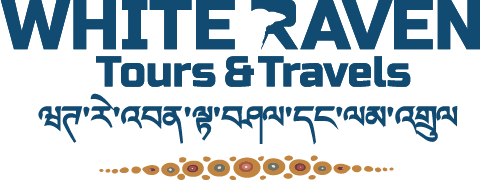Contact Us: +975- 17920418/17857895/77397369
PEOPLE SOCIETY &
RELIGION
PEOPLE
Bhutanese people can be generally categorized into three main ethnic groups. The Tshanglas, Ngalops and the Lhotshampas.
Tshanglas: The Tshanglas or the Sharchops as they are commonly known as are considered the aboriginal inhabitants of eastern Bhutan. According to historians, Tshanglas are the descendants of Lord Brahma and speak Tshanglakha. They are commonly inhabitants of the eastern part of the country. Weaving is a popular occupation among their women and they produce beautiful fabrics mainly of silk and raw silk.
Ngalops: The Ngalops who have settled mostly in the six regions of western Bhutan are of Tibetan origin. They speak Ngalopkha, a polished version of Dzongkha, the national language of Bhutan. Agriculture is their main livelihood. They cultivate cereals such as rice, wheat, barley and maize along with a variety of other crops.
Lhotshampas: The Lhotshampas have settled in the southern foothills of the country. They speak Lhotshamkha andmostly and practice Hinduism and Buddhism. Their society can be broken into various lineages such as the Bhawans, Chhetris, Rai’s, Limbus, Tamangs, Gurungs, and the Lepchas.
The other groups are the Bumthaps and the Khengpas of Central Bhutan, the Kurtoeps in Lhuentse, the Brokpas and the Bramis of Merak and Sakteng in eastern Bhutan, the Doyas of Samtse and finally the Monpas of Rukha villages in WangduePhodrang.
SOCIETY
Bhutanese society is free of class or a caste system. Bhutanese society has always maintained relative gender equality. In general Bhutan is an open and a good-spirited society.
Living in Bhutanese society generally means understanding some accepted norms such as Driglam Namzha. Driglam Namza is Bhutan’s cherished code of conduct, embodying the nation’s cultural values and traditional etiquette. This ancient practice emphasizes respect, humility, and harmony, guiding Bhutanese behavior in daily life and ceremonies. Adhering to Driglam Namza, Bhutanese people dress in traditional attire, greet with reverence, and uphold customs that reflect their rich heritage. It ensures that every interaction, from casual conversations to formal events, honors the deep-rooted traditions and preserves Bhutan’s unique identity. Embracing Driglam Namza keeps Bhutan’s cultural fabric vibrant and cohesive, celebrating a legacy that continues to thrive.
Normally, greetings are limited to saying “Kuzuzangpo” (hello) amongst equals. For seniors and elders, the Bhutanese bow their head a bit and say “kuzuzangpo la” (a more respectful greeting). Recently, shaking hands has become an accepted norm. The Bhutanese are a fun-loving people fond of song and dance, friendly contests of archery, stone pitching, traditional darts, basketball and football are played.
RELIGION
In the enchanted realm of Bhutan, where the air hums with ancient wisdom, the constitution bestows the freedom to embrace any faith. Hinduism and Christianity are also practiced in the country but majority of the population practice Buddhism. Bhutan, revered as the last bastion of Vajrayana Buddhism, first felt the spiritual touch of Guru Padmasambhava in the 8th century. Before his arrival, the land was steeped in the mystical practices of Bonism, honoring nature’s every facet.
With the Guru’s arrival, Buddhism’s roots took hold, weaving a profound tapestry into Bhutan’s soul. The arrival of Phajo Drugom Zhigpo in 1222 from Ralung in Tibet further deepened the spiritual landscape, establishing the Drukpa Kagyu sect as the state’s guiding light. His lineage continued this sacred mission, spreading enlightenment throughout western Bhutan.
In 1616, Zhabdrung Nawang Namgyal’s journey from Tibet unified these Buddhist traditions, molding Bhutan into a singular spiritual entity. Today, Bhutan’s essence is infused with Buddhism—its Dzongs, monasteries, stupas, prayer flags, and wheels echoing with the rhythmic dance of bells and gongs. The red-robed monks, fluttering flags, and sacred rituals are living testaments to the omnipresent spirituality that breathes life into every corner of this mystical land.
